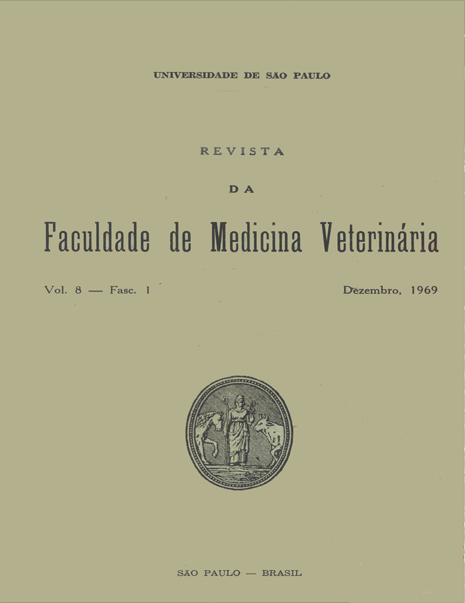Variations on the proteic levels of the blood of goats during the age development
DOI:
https://doi.org/10.11606/issn.2318-5066.v8i1p299-315Keywords:
The article has no keywords.Abstract
In the following research the authors endeavors to establish the normal blood protein picture in goats (Capra hi reus) raised in the State of São Paulo (Brazil). This planning allows studying the influences of the age factor regarding the proteins constitution of the serum and the plasma in the animals of this species. Once the proteic picture is established for the definite population which, through its distribution should be considered as a standard group, will serve as the basis for comparing the results obtained with animals presenting any affection, infestation or infection. The authors studied 150 healthy female goats (Capra hircus) of different ages, raised in several areas of the State of São Paulo (Brazil), their breedings were Anglo-Nubian (60), Toggenbourg (60) and Angora (30). For the purpose of studying any possible influence of age on the groups, each picture, the 150 goats were devided into 5 different age groups, each one comprised of 30 animals; GROUP I, comprised of 6 months old goats; GROUP II, of goats with ages ranging from 7 to 12 months; GROUP III, comprised of goats with ages ranging from 13 to 24 months; GROUP IV, with animals from 25 to 48 months and finally GROUP V, which was comprised of animals over 48 months old. The author used the Gornall and col. (1949) method to determine the total protein, albumin, globulin and ratio of albumin/globulin in the serum. The original method was modified by precipitating the globulins in a 27 g% sodium sulfite solution. The determination of the gama globulin in the serum was followed by the Frattini turbidimetric method, as recommended by Bacila and col. (1962). The determination of fibrinogen in the plasma was reached by means the Cullen and Van Slyke modified method, as recommended by Quick (1959). In the tables I to VI, there are shown the proteic picture of the goats surveyed, separated in accordance with age. The results are also present in an histogram form.


